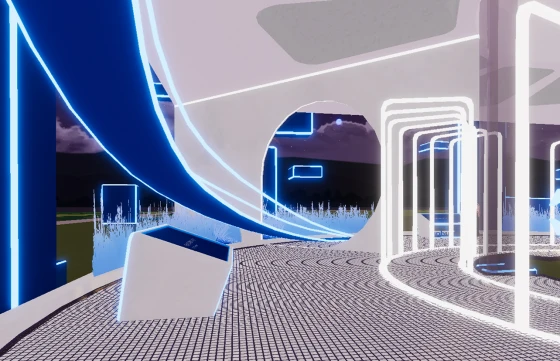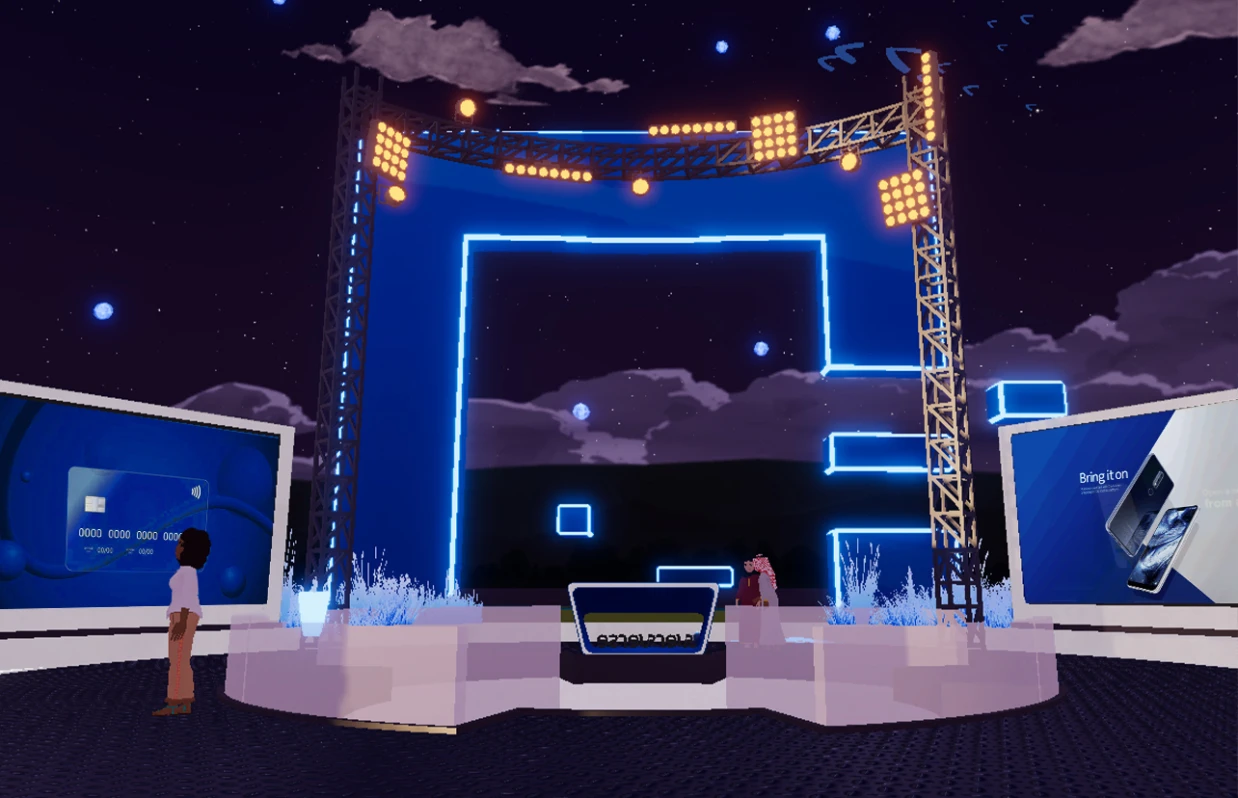Good use of lighting plays an essential role in making a virtual space more dynamic
Building in the Metaverse
Insights
It is March 2024 already!
Earlier this year, we delivered our first project in Decentraland. With some experience under our belts designing spaces in the metaverse, this was the studios first pass delivering a project on this platform, and while it came with a whole new gambit of challenges and learnings, it paid back in spades when it came to opportunity and potentials for an elevated visitor experience to the space.
Designing for the metaverse allows a different approach compared to traditional design. Architectural and design parameters become distorted opening doors to new ways of thinking about space.
It can also provide growth opportunities that change how design studios operate and collaborate. The metaverse is a rapidly expanding universe, so the skill set required to design within it varies. New challenges and limitations in the digital sphere must be tackled by combining traditional and virtual design knowledge. Additional new roles and expertise will also come into play.

A metaverse project designed in Decentraland by Mortar and More
How to Design for The Metaverse
How to Design for The Metaverse
We’re finding that leading with a strong narrative and world-building can create a powerful immersive experience that encourages users to explore and return to your space.
While choosing the right textures and colours is essential specifically in the case of Decentraland, colours that complement the default environment work best. Attempting to use real-life textures can sometimes undermine the overall look of the structure or surroundings.
The aim is not about creating realistic settings but showcasing creative and avant-garde environments that adapt to the new design field.
What also becomes abundantly clear, is that the development of an overall user experience within the space is the key factor in delivering a successful metaverse environment. This shouldn’t be a surprise, the bar is being raised consistently when it comes to real life experiences in stores. Consumers are on the continuous hunt for authentic and valuable interactions with the brands they love.
Putting human interests at the core will take on a whole new meaning as metaverse reframes human-centred experiences. Designers must understand user demands and preferences to develop human-centric solutions successfully. There’s an increase in platforms catering to a broader variety of users, not just gamers. Accessibility is vital, and this can involve adding avatars that provide clear instructions for users who might be new to interacting with virtual spaces. The metaverse may be its own world or universe, but cultural identities must still be present in the experience. It is critical to note that the design and interactions respect different cultures to create a more inclusive virtual world.
The most significant advantage of designing environments virtually is seeing the complete design and changing it as required when something doesn’t turn out how it’s envisioned. It is possible to make many iterations within reason without wasting real-life traditional resources, like building materials! It is important to remember though, futureproofing must still be considered to ensure the design can accommodate expansion without affecting the user experience.
The Potential for Business Value
The Potential for Business Value
The metaverse allows project stakeholders to see and understand design more intuitively. It’s a platform that can help amplify connections and enrich interactions if used correctly.
The challenge for businesses is learning how to navigate this new technology and introduce it as the next frontier of human experience to their clients ensuring it is interwoven into an overall brand strategy.
The metaverse, or any online build should serve as a genuine benefit to a customer and not be an add on gimmick with no true value. Major companies like Disney and Epic Games, the developer of Fortnite, have seen the value in social digital connections. These companies have chosen to collaborate to create expansive, open games that improve this kind of virtual experience.


Real-life components mixed with virtual elements creates engaging experiences